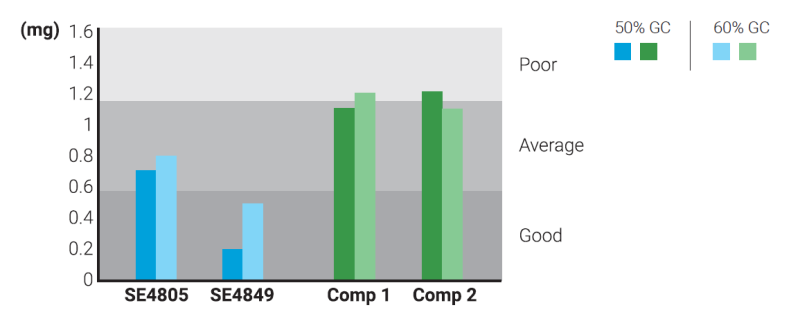Knowde Enhanced TDS
Identification & Functionality
- Chemical Family
- Reinforcement Form
- Reinforcement Material
- Composite Materials Functions
- Technologies
- Product Families
Features & Benefits
- Materials Features
- Product Benefits
Improved Manufacturing Economics
Greater than 50% reduction in fuzz generation relative to competitive reinforcements for easier processing and less downtime for clean-up.
Superior Composite Strength
- Increased splice tensile strength improves package to package transfer efficiency.
- Increased lubricity imparts lower strand tension enabling up to a 40% increase in compounding line speed for reduced manufacturing costs.
Superior Glass Dispersion and Increased Part Strength
- Outstanding compatibility with Polyolefins, enabling better wet-out, uniform glass dispersion and potentially higher glass loading.
- Optimized adhesion to the polymer matrix offering excellent mechanical properties to meet stringent end-use requirements.
Enhanced Service Life
Advantex® glass helps fight corrosion, enhancing service life compared to standard E-glass.
Applications & Uses
- Applications
- Compatible Polymers & Resins
- Applications
SE4849 product is designed for use in LFT-G (pellets) Polyolefin (primarily PP) hot-melt compounding processes for the manufacturing of structural and semi-structural automotive applications including front-end modules, seat carriers and door modules, as well as a variety of consumer goods, appliances and power tools. SE4849 is also optimized for used in CFRT (Continuous Fiber Reinforced Plastic) tapes for structural applications where the performance characteristics of a continuous unidirectional glass reinforcement can significantly improve end-use performance.
Properties
- Technical Characteristics (Nominal Values)
Tex Yield Filament Diameter (μ) Loss on Ignition (%) Moisture( % Max)
2400 207 17 0.40% 0.05% 4400 113 23 0.40% 0.05% 4800 103 24 0.40% 0.05% 4800 103 17 0.40% 0.05%
Regulatory & Compliance
- Chemical Inventories
Technical Details & Test Data
- Mechanical Properties & Performance Testing
Fuzz Generation 50% - 83% better than competitors

Packaging & Availability
- Packaging & Palletization (Standard Reference)
Pallet Dimensions
Packaging Pallet Height (cm) Pallet Length (cm) Pallet Width (cm) Pallet Weight (Net, Kg) Packages per Pallet Number of Layers
No Tube ~125 115 115 ~1200 64 4 No Tube ~97 115 115 ~900 48 3 Thicker Tube ~200 115 115 ~900 48 3 Package size will vary by region.
- Availability (Standard Reference)
Tex Manufacturing Region
2400 N. America; Europe; Asia Pacific
4400 Asia Pacific 4800 Asia Pacific 4800 Asia Pacific - Labeling
Each individual package is labeled with information including: product name, tex/yield, producing plant and production date.
Storage & Handling
- Storage
- Unless otherwise specified, it is recommended to store glass fiber products in a cool, dry area. The glass fiber products must remain in their original packaging material until the point of usage. The product should be stored in the workshop in its original packaging for 48 hours prior to its utilization, to allow it to reach the workshop temperature condition and prevent condensation, especially during the cold season. The packaging is not waterproof. Be sure to protect the product from the weather and other sources of water.
- When stored properly, there is no known shelf life to the product, but retesting is advised after three years from the initial production date to insure optimum performance.

